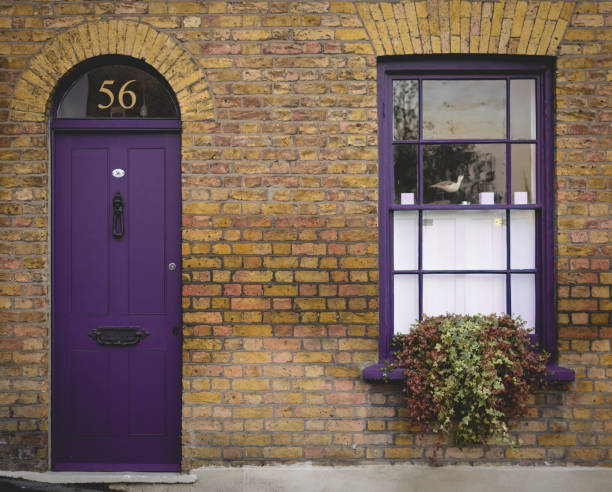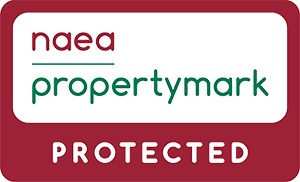Buying or selling a home can be a complicated and lengthy process. With different steps, stages and people involved, it is a good idea to familiarise yourself with how the conveyancing process works. To help you, we have prepared a step-by-step guide of the conveyancing process for a typical property sale and purchase transaction.
Conveyancing Process for Purchasing a Property
1. Choose a Solicitor
Once your offer has been agreed on a property, we recommend your first step is to instruct an expert conveyancing solicitor or conveyancer, preferably one that offers fixed conveyancing fees. They will then send initial forms for you to complete, including identification requirements. Your solicitor will also request payment for searches to be carried out on the purchase property.
Care should be taken when choosing a solicitor. Simply picking the cheapest conveyancing quote is a recipe for disaster. It is important that you instruct a solicitor who specialises in property and has an established track record in conveyancing. For most people their house is the biggest asset they will ever own, so it is vital to have a specialist solicitor dealing with this for you.
2. Contract, Deeds and Mortgage
Your solicitor will request the contract from your seller’s solicitor, who will proceed with drawing it up. This will include any issues raised in the documents, and all of the forms that the seller has completed.
Your solicitor will also request a copy of the Land Registry title for the property.
If you are applying for a mortgage, the mortgage offer should now be forwarded to your solicitor.
3. Searches and Enquiries
The next step is to obtain searches, which is an essential part of the conveyancing process, to ensure the property is not adversely affected by anything. A variety of searches may be needed some specific to a location, but the most common are:
Environmental Search: checks for flooding predictions, ground stability, contamination hazards, the presence of landfill sites etc.
- Local Authority Search: provides details regarding planning permissions granted and refused, building regulations certificates and information as to works carried out at the property. This also includes whether the property is in a conservation area and/or whether there is a tree preservation order connected to the property. The list goes on, but this search provides very important information.
- Water & Drainage Search: checks that the property is connected to water and sewerage.
- Land Registry Searches: the title and title plan will confirm the seller’s right to sell the property.
In addition, a list of enquires will be raised with the seller’s solicitor, based on the contract pack and search results.
Once these have all been completed, your solicitor will then review the search results and enquiry replies, along with the mortgage offer.
4. Exchange of Contracts
Once everything has been agreed, including the completion date, you will receive a final version of the contract. This will need to be signed by both parties. At the same time, you will sign the Transfer. You pay the deposit / full cash funds to your solicitor and your solicitor will request the mortgage funds from the lender, if applicable.
From this point, both you and the seller are legally obliged to purchase the property.
Once the contract is signed by both parties, the seller has until the completion date to vacate the property. This can happen at any point, as long as the property is available to the buyer on the day of completion.
5. Completion
Before completion, your solicitor lodge an interest in the property with the Land Registry. This will mean the deeds are frozen for thirty days, allowing you to complete and apply for registration. Your solicitor will also send a final statement of monies due, which must be cleared in the solicitor’s bank account by the day before completion.
On completion day, all outstanding monies will be transferred to the seller’s solicitor. Once this is confirmed, you can collect the keys to your new home from the estate agent, and the title and transfer deeds are forwarded to your solicitor. Your solicitor will then register the property in your name and forward all official papers.
All that remains is the final step of the conveyancing process, which is for all outstanding monies to be paid, such as solicitor fees and any outstanding mortgage balance.
Conceyancing is a complex legal process, but in the hands of eperts, it will usually run as smoothly as possible.
Conveyancing Process for Selling a Property
1. Choose a Solicitor
Despite many people waiting until they have accepted an offer on their property, we strongly recommended that you instruct an expert conveyancing solicitor or Conveyancer at the stage of putting the property on the market. With lots of forms to complete, including identification requirements, it is better to be prepared and proactive. If you can do this before you accept an offer, then they will be ready to send the contract out when this happens.
Once again, care should be taken when choosing a solicitor. Avoid going with the cheapest quote. It is vital to ensure you instruct an expert Conveyancing solicitor who specialises in property and has an established track record in conveyancing.
2. Initial Documents
The next step is to obtain and complete a number of documents and processes. Your solicitor can guide you through these, but in general these will be:
- Proof of Identity: a passport or driving licence, together with proof of address, such as a bank or utility statement.
- Fittings & Content Form (TA10): this needs to be filled in and will specify what is included in the sale, both inside the property and in the outdoors areas.
- Property Information Form (TA6): this requires a declaration about a range of matters concerning the property, from defining the boundaries to environmental concerns. Your solicitor will advise you on what needs to be included.
- Copies of any documents specified in TA6: for example, Building Regulations sign off.
- Leasehold or Shared Freehold Documents: a copy of the lease, if appropriate, or documents such as the Share Certificate.
- Management Information Pack: in the case of a leasehold, this should be ordered from the freeholder or their agent. It should be ordered promptly, since it can take some time to arrive.
3. Contract, Deeds & Mortgage
Your solicitor will draw up the contract pack, which will include forms from step 2 above and send these to your buyer’s solicitor.
Title deeds for the property will be requested from the Land Registry, if they are not paper deeds.
If you have an outstanding sum remaining on any mortgage on the property, your solicitor will request confirmation of the amount from your lender.
4. Enquiries
The buyer’s solicitors will then write to us with any enquiries they wish to make from the information contained in the contract pack and their search results.
5. Exchange of Contracts
Once everything has been agreed, your solicitor will draw up a final version of the contract, and this will be signed by both parties.
From this point, you are legally obliged to sell the property.
Once the contract is signed by both parties, you have until the completion date to vacate the property. This can happen at any point, as long as the property is available to the buyer on the day of completion.
6. Completion
The final step of the conveyancing process is on completion day. Monies will be transferred to your solicitor and the keys will need to be made available to the buyer. Your solicitor will forward the title and transfer deeds to the buyer’s solicitor.
All that then remains for the conveyancing process is for all outstanding monies to be paid. This may include estate agent’s fees, solicitor fees and any outstanding mortgage balance. Your solicitor will then transfer any funds remaining to you.





